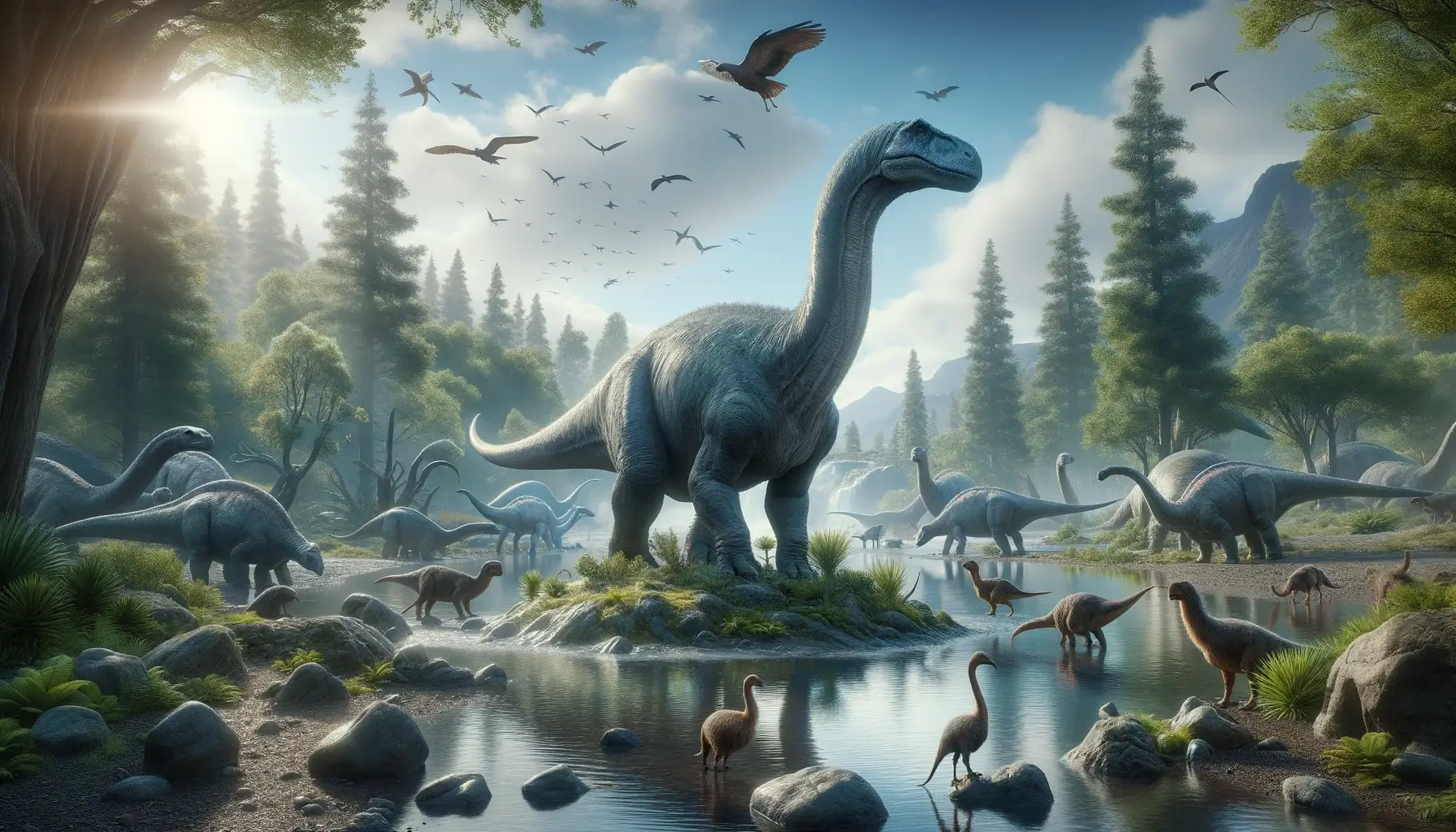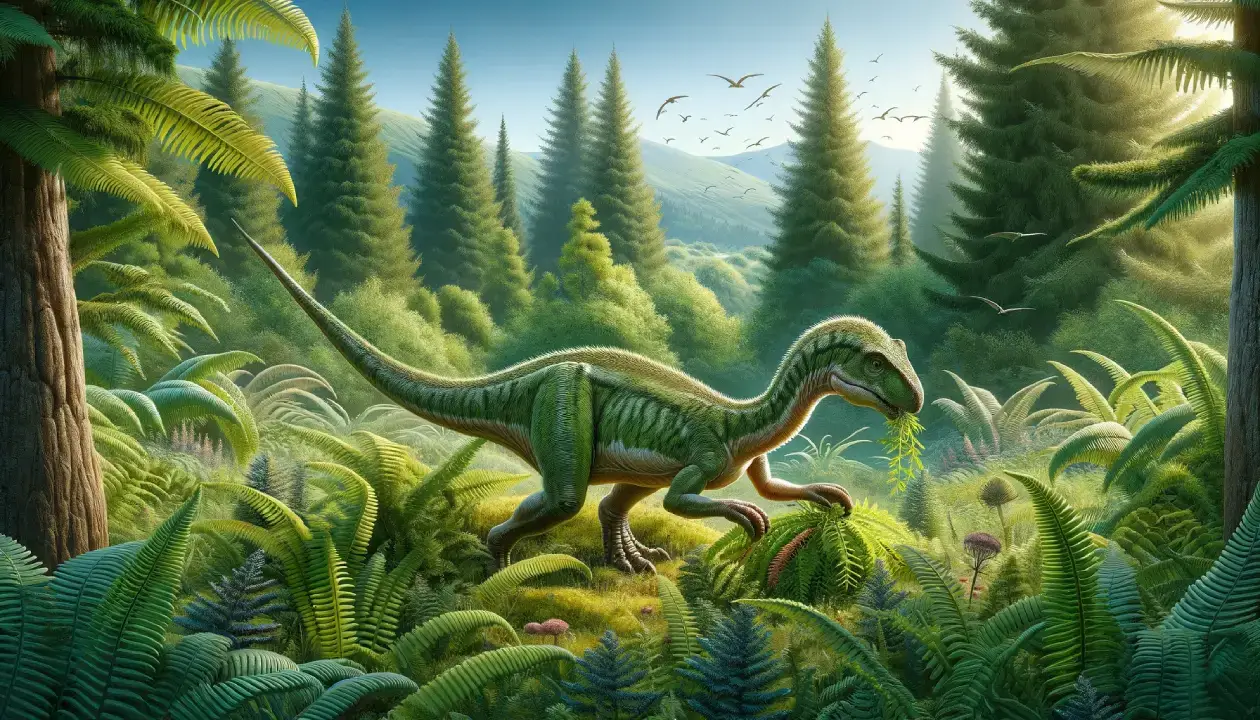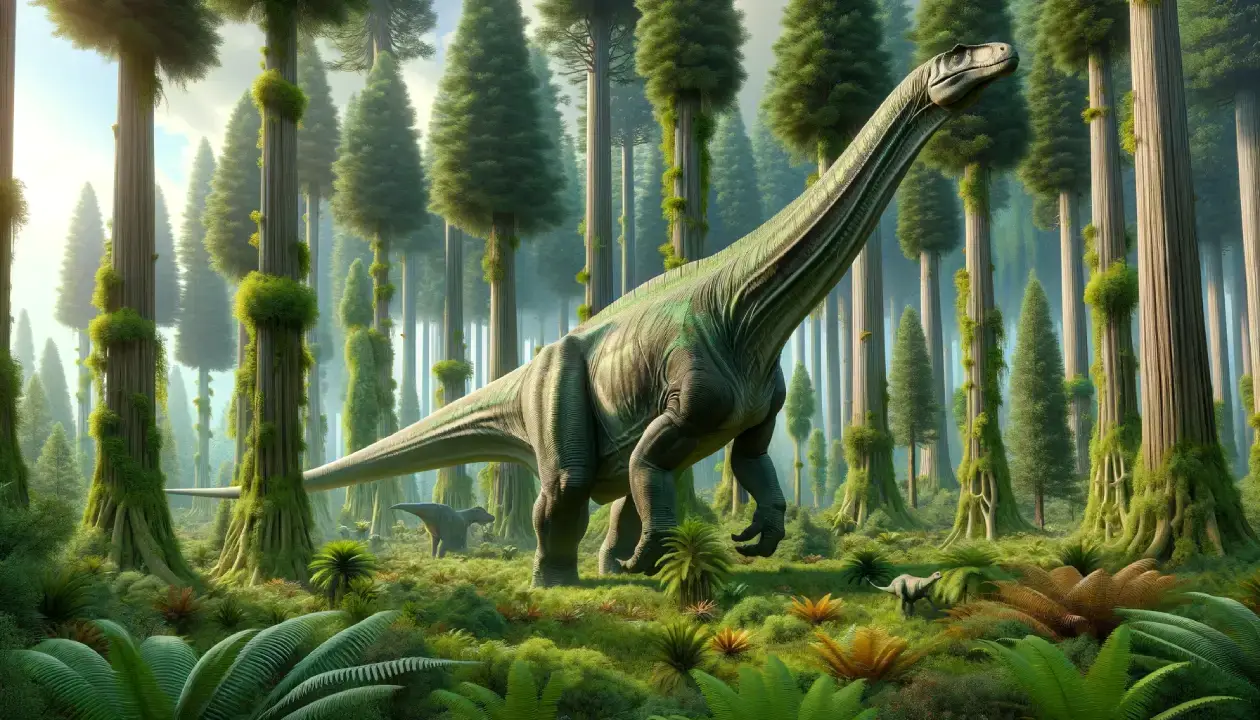Antarctosaurus was a large plant-eating dinosaur that lived in what is now South America during the Late Cretaceous period, about 89 to 66 million years ago. It was one of the first dinosaurs to be discovered in Argentina, and its name means “southern lizard”. It had a long neck and tail, but also carried armor in the form of osteoderms. These were bony plates or spikes that covered its back and neck, and may have helped it defend itself from predators.
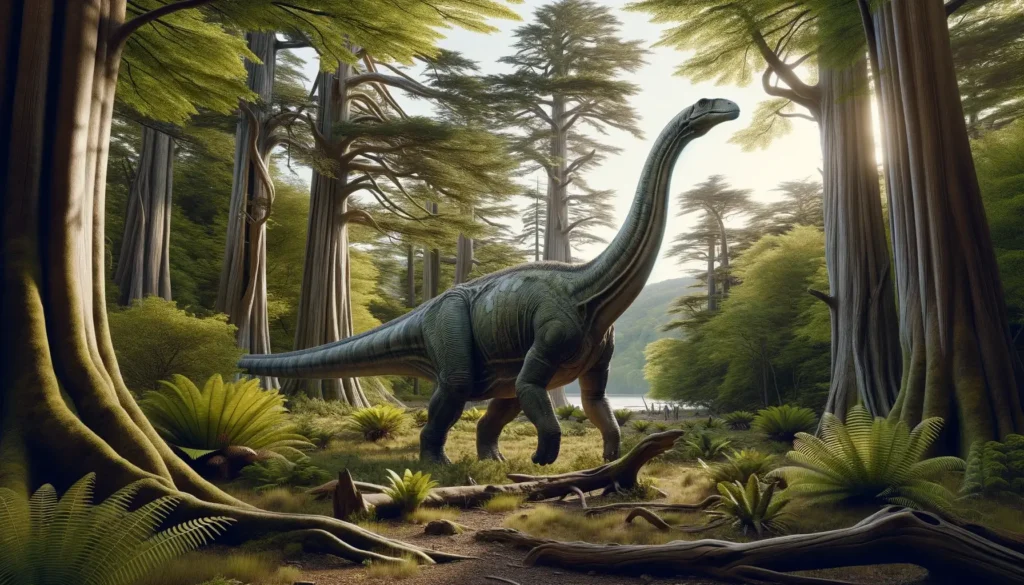
Basic Information
| Feature | Details |
| Time Period | Late Cretaceous (83-66 million years ago) |
| Diet | Herbivore |
| Length | 18 meters (59 feet) |
| Weight | 30-60 metric tons (33-66 short tons) |
| Size | Gigantic |
| Posture | Quadrupedal |
| Locations | Argentina, Chile, Uruguay, Kazakhstan, Brazil |
| Continent | South America, Asia |
| Type | Sauropods |
| Habitats | Grasslands, Floodplains |
Description of Antarctosaurus
Historical Context
Antarctosaurus was first mentioned in print in 1916 by geologist Ricardo Wichmann, who discovered some of its bones in Argentina in 1912. However, it was not formally named and described until 1929 by German paleontologist Friedrich von Huene. The name Antarctosaurus means “southern lizard” and refers to its reptilian nature and its location on a southern continent. Von Huene named two species of Antarctosaurus in his 1929 monograph: A. wichmannianus, the type species, and A. giganteus, a fragmentary specimen of enormous size. Three more species were later assigned to Antarctosaurus by other researchers: A. septentrionalis from India, A. jaxarticus from Kazakhstan, and A. brasiliensis from Brazil. However, these species are considered dubious or unlikely to belong to the genus by modern studies. Antarctosaurus was one of the last non-avian dinosaurs to live before the mass extinction event that wiped out most of them 66 million years ago.
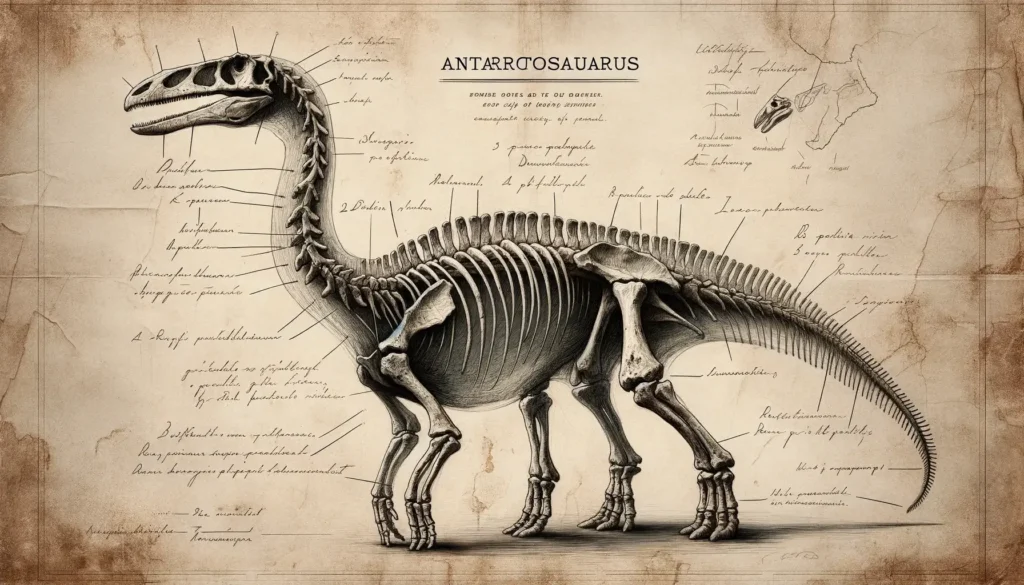
Physical Attributes
Antarctosaurus was a gigantic herbivorous dinosaur that belonged to the group of sauropods, which were characterized by their long necks, long tails, and four-legged stance. Antarctosaurus was a member of the subgroup of titanosaurs, which were the most diverse and widespread sauropods in the Late Cretaceous. Antarctosaurus had a broad, low-slung body with short legs and a long tail. Its head was wide and flat, with small eyes and nostrils that faced sideways rather than forward. Its jaws were covered with a horny beak and had small, peg-like teeth for cropping plants. Its most distinctive feature was its armor, which consisted of bony plates, or osteoderms, embedded in the skin and covering most of the body except for the belly. The armor was thickest on the neck, back, and tail, where it formed rows of large knobs and spikes. The function of the armor is not clear, but it may have provided protection from predators or rivals, or helped regulate body temperature or produce sounds.
Feeding Habits
Antarctosaurus was a herbivore that fed on low-growing plants such as ferns, cycads, and horsetails. It had a broad muzzle that allowed it to take large bites of vegetation. It did not have complex teeth for chewing, so it swallowed its food whole or with minimal processing. It had a large gut that could digest tough plant matter with the help of symbiotic bacteria.
Unique Features
Antarctosaurus had several unique features that distinguished it from other titanosaurs and dinosaurs. One of them was its fused bones, which gave it extra strength and rigidity. The name Antarctosaurus means “fused lizard” or “stiffened lizard” because of this feature. Another unique feature was its enormous size, which rivaled some of the largest dinosaurs ever known. The second species named by von Huene, A. giganteus, was based on a femur that measured 2.35 meters (7.7 feet) in length and a tibia that measured 1.55 meters (5 feet) in length. These bones indicate that A. giganteus could have reached a length of 30 meters (98 feet) and a weight of 60 metric tons (66 short tons). However, this species is considered dubious by some researchers and may belong to a different genus.
Movement and Speed
Antarctosaurus was not a fast or agile dinosaur. It walked on four legs and had a low center of gravity, which made it stable but also limited its mobility. It could not turn quickly or run for long distances. Its top speed has been estimated to be around 10 km/h (6 mph), similar to a human walking pace. However, it could make sudden movements when necessary, such as raising its head or swinging its tail.
Cultural Impact
Antarctosaurus has not been featured in many books, movies, games, or toys as a popular dinosaur. It is often overshadowed by other titanosaurs such as Argentinosaurus, Saltasaurus, or Dreadnoughtus. However, some examples of its appearances in popular culture are Dinosaur King (2007-2009), a Japanese anime series where it is one of the main characters’ dinosaurs, and Jurassic World Evolution (2018), a video game where it is one of the unlockable dinosaurs.
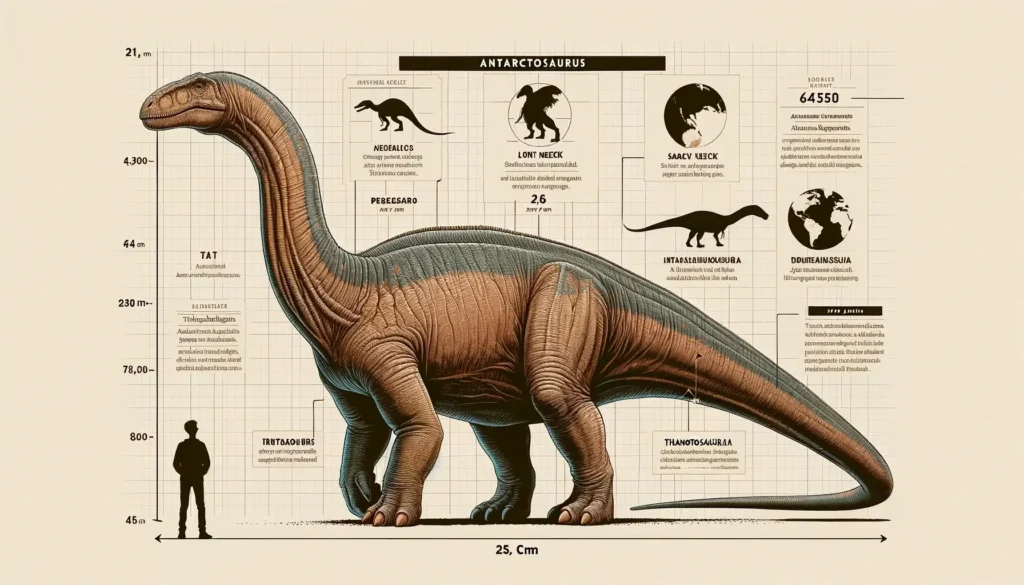
Interesting Facts
- Antarctosaurus was one of the largest titanosaurs ever, rivaling some of the largest dinosaurs in history.
- Antarctosaurus lived alongside other famous dinosaurs such as Tyrannosaurus rex, Triceratops, and Edmontosaurus in South America at the end of the Cretaceous period.
- Antarctosaurus had sinuses and nasal chambers in its snout that may have helped it regulate its body temperature or produce sounds.
- Antarctosaurus had very small eyes relative to its body size, suggesting that it relied more on other senses such as smell and hearing.
- Antarctosaurus may have lived in herds or groups for protection and social interaction.
Related Dinosaurs
- Saltasaurus: A close relative of Antarctosaurus that had a shorter neck and tail and smaller osteoderms on its armor.
- Argentinosaurus: Another close relative of Antarctosaurus that was one of the largest and heaviest dinosaurs ever known.
- Dreadnoughtus: A more distant relative of Antarctosaurus that was also a gigantic titanosaur with a long neck and tail and a robust body.

